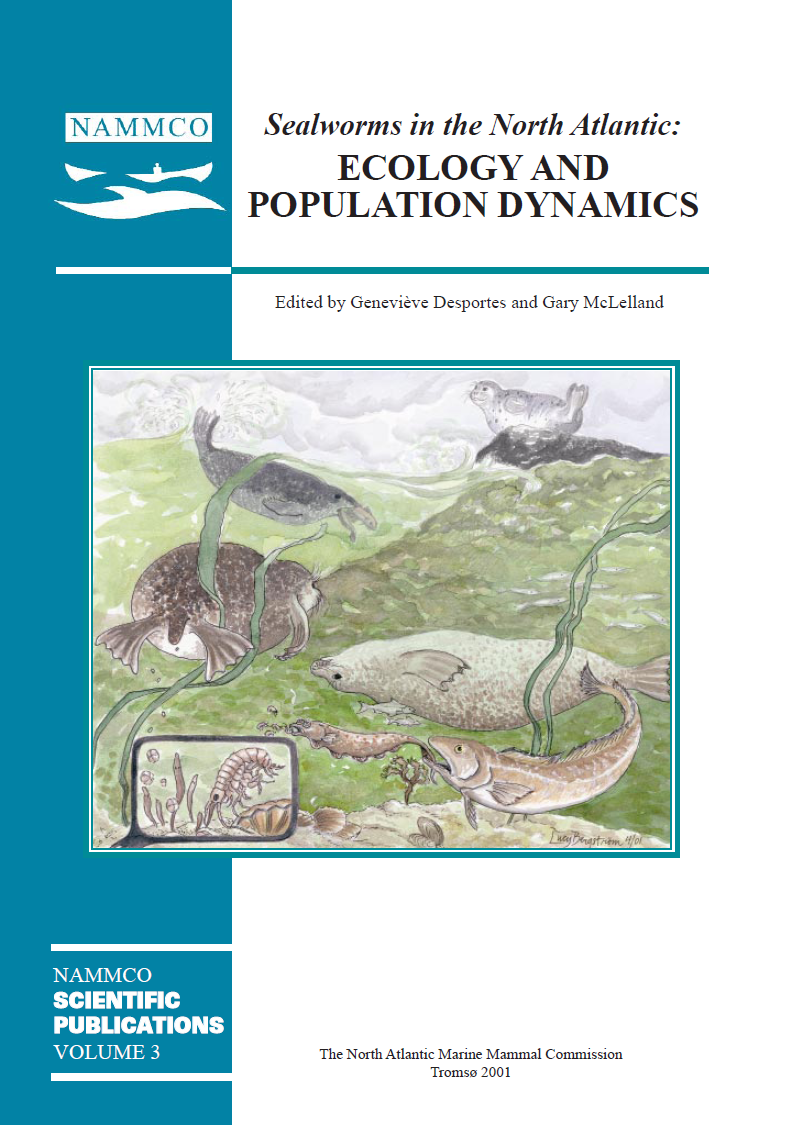Patterns of abundance and maturity among three species of parasitic nematodes (Pseudoterranova decipiens, Contracaecum osculatum, Anisakis simplex) co-existing in Sable Island grey seals (Halichoerus grypus)
DOI:
https://doi.org/10.7557/3.2964Keywords:
Sealworms, Pseudoterranova decipiens, hosts, Contracaecum osculatum, Anisakis simplex, grey seals, Halichoerus grypus, abundanceAbstract
The abundance and maturity of three species of anisakine nematode (Pseudoterranova decipiens, Contracaecum osculatum, Anisakis simplex) that co-occurred in the stomachs of Sable Island grey seals were examined in relation to seal growth and seasonal considerations. Sealworm (P. decipiens), the predominant nematode in these seals, typically reached numbers of 400 to 2000 worms per stomach. C. osculatum and A. simplex were usually found in much smaller numbers of 40 to 100 and 20 to 60 worms, respectively, per stomach. All three species initially increased in abundance as the seals grew, but after most of a seals’ growth had been attained P. decipiens abundance continued to increase with age, A. simplex numbers either continued to increase or were simply maintained, while C. osculatum abundance declined. Numbers of both P. decipiens and A. simplex declined during winter breeding/pupping and summer moulting fasts or partial fasts, and rose during the regular feeding periods between the fasts. Conversely, numbers of C. osculatum rose during the breeding period, and also during the moulting period in younger seals. We believe this could be attributed to some degree of feeding on prey species in the immediate vicinity of Sable Island that were not preferred during focused feeding periods, and that the inclination to feed during fasting periods decreased as seals grew. An inverse relationship between worm abundance and worm maturity, attributable to the seasonal changes in rates of ingestion of immature worms, was more pronounced for C. osculatum than P. decipiens. C. osculatum was usually represented by much higher proportions of mature worms than P. decipiens. This could be entirely related to the longer periods of time dedicated to feeding than spent breeding or moulting, but higher mortality rates of immature C. osculatum or greater longevity of mature C. osculatum could also have occurred. A. simplex, generally associated with cetacean species as final hosts, rarely matured in grey seals. We have doubts that the grey seal could be considered a final host for A. simplex.Downloads
Published
2001-11-24
How to Cite
Fowler, G. M., & Stobo, W. T. (2001). Patterns of abundance and maturity among three species of parasitic nematodes (<i>Pseudoterranova decipiens</i>, <i>Contracaecum osculatum</i>, <i>Anisakis simplex</i>) co-existing in Sable Island grey seals (<i>Halichoerus grypus</i>). NAMMCO Scientific Publications, 3, 149–160. https://doi.org/10.7557/3.2964
Issue
Section
Articles





